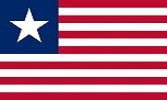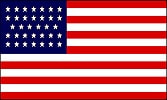The San Felipe Incident
|
The Battle Of Gonzales is often presented as the first significant event of the Texas Revolution, yet more-serious happenings at Velasco presaged even this event. The leading sentence of “Thunder On the Gulf” by C. L. Douglas leads off with “The merchant schooner San Felipe under full sail and with a fair wind behind, was beating in for Velasco, the Texas trading port at the mouth of the Brazos River.” Carrying trade goods, munitions and two important passengers, Stephen F. Austin (returning from twenty months of imprisonment in Mexico via New Orleans) and Lorenzo de Zavala (former personal secretary to Santa Anna, now a political refugee), Captain William A. Hurd had armed the ship in New Orleans with two six-pound waist guns and small arms for the crew, and armored it with bales of cotton. Waiting at anchor off Velasco was the blockading sloop-of-war Correo Mexicano, captained by the notorious Thomas M. “Mexico” Thompson, who had just captured the American brig Tremont and its cargo of lumber earlier in the day without apparent justification. Although the San Felipe appeared to have slipped past the Mexican warship into the Brazos bar on 1-Sep-1835, the owner Thomas F. McKinney observed the situation from land (seeing the San Felipe was the Correo’s next target), and then loaded some armed volunteers aboard his steamer Laura to challenge the Correo. First swapping out the passengers for the armed volunteers, the San Felipe assisted by the Laura went after the becalmed Correo and captured her after a cannon duel and overnight sea chase, eventually sending the ship and some crew to New Orleans to be charged with piracy. |
|
The episode has been described as the San Felipe Incident, and was the last step in convincing Stephen F. Austin in favor of Texas independence. As Austin’s nephew later wrote “... he walked the beach until late at night, hoping to hear or see something of the vessels. Next day the Laura returned with the intelligence of the capture of the Correo. Austin saw in this the beginning of trouble.” Gregg Cantrell in his book "Stephen F. Austin, Empresario of Texas" wrote "But in his own mind he had already reached the most critical conclusion: Texas must be free from Mexico .... The question was no longer one of ends, only of means." John Powers in his book "The First Texas Navy" has also written that “…. Within days of the episode Stephen F. Austin … called publicly at Brazoria for a general consultation of the people to decide what course Texas should now pursue in the mounting political process. The convening of the General Consultation followed.” |
|
Writing of the incident some years later, Charles W. Hayes claimed the circumstances were known in advance by Thomas McKinney and Samuel May Williams, but wrote “This was the first naval triumph, and was one of the principal causes that led to the proclamation of war, and its success is justly due to the boldness and daring of Col. McKinney.” Thus, this incident was important not only as a SIGN that the Texas Revolution was underway but, more profoundly, was also a major proximate CAUSE of it, since it convinced “The Father Of Texas” to throw his considerable influence behind the War Party, after which things moved rapidly to open revolt. |
A narrative report that discusses all of the research on
the several Forts Velasco is available at the link below:
A narrative report that discusses all of the research on
the several Forts Velasco is available at the link below:
<<< What was "Monument Square"? < click for other pages > The Texan Fort Velasco >>>
Background wallpaper is from 1836 version of "Map of Texas - With Parts of the Adjoining States" by Stephen F. Austin, printed by H. S. Tanner of Philadelphia
Background wallpaper is from 1836 version of "Map of Texas - With Parts of the Adjoining States" by Stephen F. Austin, printed by H. S. Tanner of Philadelphia
















